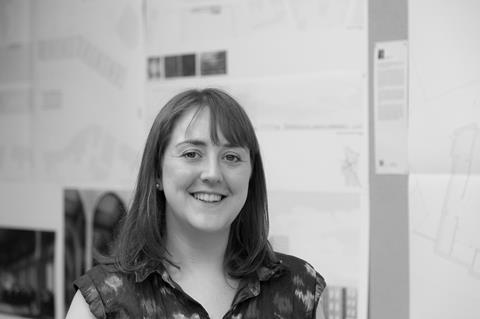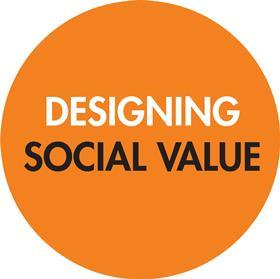Architects’ ability to handle uncertainty will help the profession survive uncertain times, writes Eleanor Jolliffe

Over the last few months I have been considering the changing role of the architect, looking at protection of title, education, diversity, fee scales and procurement. One of the most striking themes I noticed running through all these areas is how the architect must learn to sit outside the easy certainty, in the spaces in-between, the shades of grey.
By nature architects sit between the arts and the sciences. But by necessity they must learn to thrive between innovation and conservation; between collaboration and competition; and between business and academia. Changing times are making this balancing act ever more vital to an architect’s skillset.

Architectural education is currently at a crossroads. There is pressure from many sides for it to become better at practical application. Meanwhile practitioners are being called on to better engage with high-quality, evidence-based research and to increase their participation in RIBA stage 7 and other forms of post-occupancy analysis.
Protection of title, with little prospect of protection of function, leaves architects in a strange no-man’s land where the profession is called to greater competition within the broader context of the construction industry while simultaneously upholding the unspoken rules associated with a profession that might be expected to sit quietly and authoritatively behind a brass plaque, unsullied by business concerns.
Recent governments’ antipathy towards fee scales calls a profession historically and notoriously ill at ease with business to engage, compete and innovate in a highly competitive market for professional services.
The increasing access the internet has given us to diversity of thought and experience has re-shaped the composition, attitudes and practices of a patron-led profession dominated for most of history by highly skilled or educated men from a certain social background.
Increased scale and complexity of projects and regulatory environments since the Second World War has re-shaped and diversified procurement routes and roles, necessitating increased specialisation of knowledge. This sits in tension with the architect’s historic role of designing and leading all aspects of a building project, with architects no longer capable of holding the necessary breadth of ability and knowledge.
Alongside the societal and professional changes I was struck by the changing role of the RIBA. It may have been the sources I referred to, but the institute of the past seemed to chart the course for the profession: lobbying for protection of title, professionalisation, fee scales and myriad smaller concerns.
This isn’t the role it fulfils now, or certainly not in the popular imagination. The majority of my friends (in their mid-twenties to thirties) have not even joined the RIBA. Less still do they look to it for professional leadership or definition. Perhaps this is because of the increased access we all have to information, individual research and expression of opinion which diminishes the need for its historic role. Perhaps it is due to something else. It is not a problem faced solely by the RIBA, of course. One only needs to look at coverage of government ministers, the Royal Family or the Church of England to see that society generally no longer reveres establishment institutions.
Another significant factor in the shifting role of the architect has been the impact of government policy – changes to regulations, procurement and competition rules, and planning policy. We are a patron-enabled profession whose built output is heavily monitored and regulated by government frameworks – at local, national and, at least for the moment, international levels.
As I was writing this column Boris Johnson was speaking about the future of the UK, of his plans for “unleashing Britain’s potential… where no achievement lies beyond our reach”. Simultaneously European negotiators were firing their opening shots, saying “the interests of Europe, of each and every member state and of all our citizens come first”.
Whatever our future looks like outside Europe – and I am neither negotiator nor diplomat so will not speculate – it seems unlikely that the architectural profession will be left unchanged or unscathed by this dramatic shift in our country’s trajectory.
I hope, though, that the increasingly diverse, socially engaged and individual expressions of architectural practice that make up today’s profession allow us to thrive better in those vital spaces in-between. These spaces may be hard to define but they seem to be where we thrive, innovate and best adapt to our changing context.
Throughout architecture school and practice we are encouraged to design for both the user and context in which we are briefed – but also for their future adaptations and needs. It is a challenging semi-prophetic request, and one that few other professions have to engage with as deeply as we do.
But the fact that we succeed in this should surely mean that we are well placed to adapt and thrive as our own professional context inevitably moves on.










No comments yet